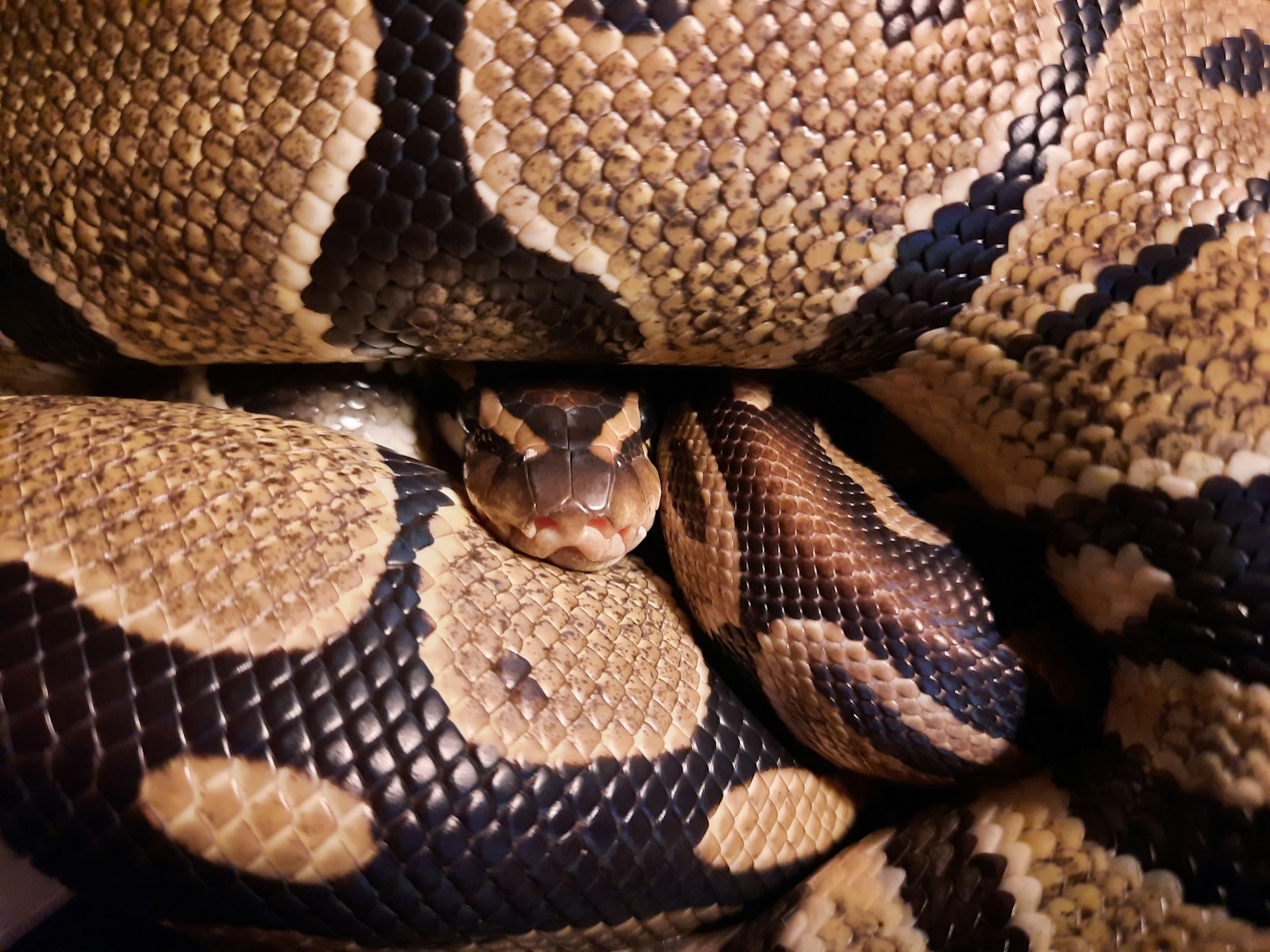In the mysterious world of reptiles, snakes have evolved some fascinating adaptations that intrigue scientists and nature enthusiasts alike. Among these peculiarities is the ability of many snake species to sleep with their eyes wide open—a trait that seems counterintuitive yet serves critical survival functions. Unlike mammals that close their eyelids during sleep, snakes present a more complex relationship with rest and visual awareness. This seemingly perpetual vigilance isn’t merely an optical illusion but a sophisticated evolutionary adaptation that helps these remarkable creatures navigate their environments and evade predators even during their most vulnerable moments.
The Anatomical Reality: Snakes Don’t Have Eyelids

The fundamental reason why snakes appear to sleep with their eyes open is remarkably straightforward—they physically cannot close them. Unlike humans and most other vertebrates, snakes evolved without movable eyelids. Instead, they possess a transparent scale called a “spectacle” or “brille” that permanently covers and protects each eye. This specialized scale is essentially a modified eyelid that fused shut during evolution, creating a clear, protective window. The spectacle is shed periodically along with the rest of the snake’s skin during the molting process, allowing the snake to maintain clear vision throughout its life while eliminating the need for blinking mechanisms.
Evolutionary Advantages of Lidless Eyes

The absence of eyelids offers snakes several evolutionary advantages in their diverse habitats. First, lidless eyes eliminate a potential weak point where parasites or debris could enter and cause infection. For burrowing species, the spectacle provides critical protection against soil and substrate that would otherwise damage the delicate eye surface. Additionally, the permanent eye covering reduces water loss in arid environments, helping desert-dwelling snakes conserve precious moisture. Perhaps most importantly, this adaptation allows snakes to maintain some visual awareness of their surroundings even during periods of rest, potentially alerting them to approaching predators without requiring full wakefulness.
How Snakes Actually Sleep

Despite appearances, snakes do indeed sleep, entering periods of reduced neurological activity and lowered metabolism, similar to other vertebrates. Research has shown that during snake sleep, brain activity slows down, and the reptile becomes less responsive to minor stimuli, though they comparatively remain more alert than mammals during sleep. Most snakes adopt specific resting postures when sleeping, often coiling their bodies for stability and protection or seeking shelter in burrows, hollow logs, or rock crevices. Interestingly, some species even demonstrate sleep behaviors that suggest different stages of sleep, similar to the REM and non-REM cycles observed in mammals, though with distinct reptilian characteristics. The inability to close their eyes doesn’t prevent snakes from achieving the neurological rest necessary for health and survival.
The Mystery of Snake Consciousness During Sleep

The exact nature of snake consciousness during sleep remains somewhat mysterious to researchers. While electroencephalogram (EEG) studies have confirmed that snakes experience genuine sleep states with reduced brain activity, the persistent visual input through their transparent spectacles creates an interesting neurological scenario. Scientists believe snakes have evolved specialized neural mechanisms that allow them to filter visual information during sleep, essentially “turning down” the processing of non-threatening visual stimuli. This selective attention system likely enables them to remain dormant and conserve energy while still maintaining a rudimentary awareness of significant environmental changes. Some researchers speculate that this might represent a more primitive form of sleep that predates the complete consciousness shutdown seen in mammals.
Protection Mechanisms That Replace Blinking
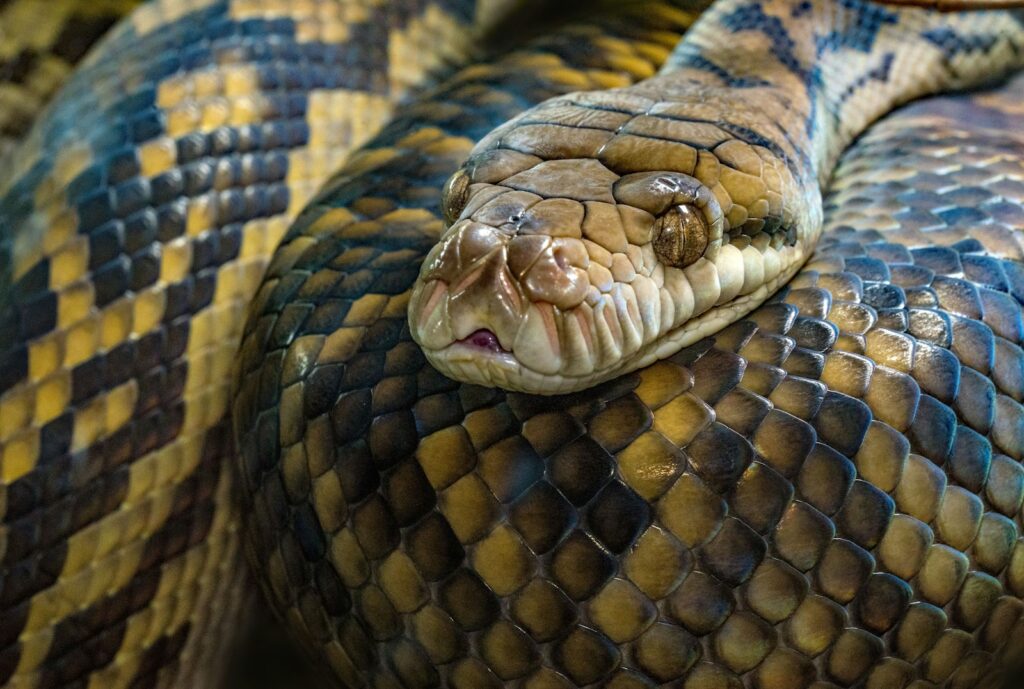
Since snakes cannot blink to moisten and clean their eyes, they’ve developed alternative mechanisms to protect these vital sensory organs. The spectacle itself contains a thin layer of fluid between it and the cornea, creating a protective cushion that helps maintain eye health. Blood vessels within this space deliver nutrients to the eye and remove waste products, functions that in other animals are partially assisted by the cleaning action of blinking. Additionally, the regular shedding process removes any accumulated debris or damage on the eye’s protective covering. When a snake begins the molting process, the spectacle often turns a milky blue color as fluid accumulates between the old and new eye scales, a condition sometimes mistaken for eye disease by inexperienced observers.
Variation Among Snake Species
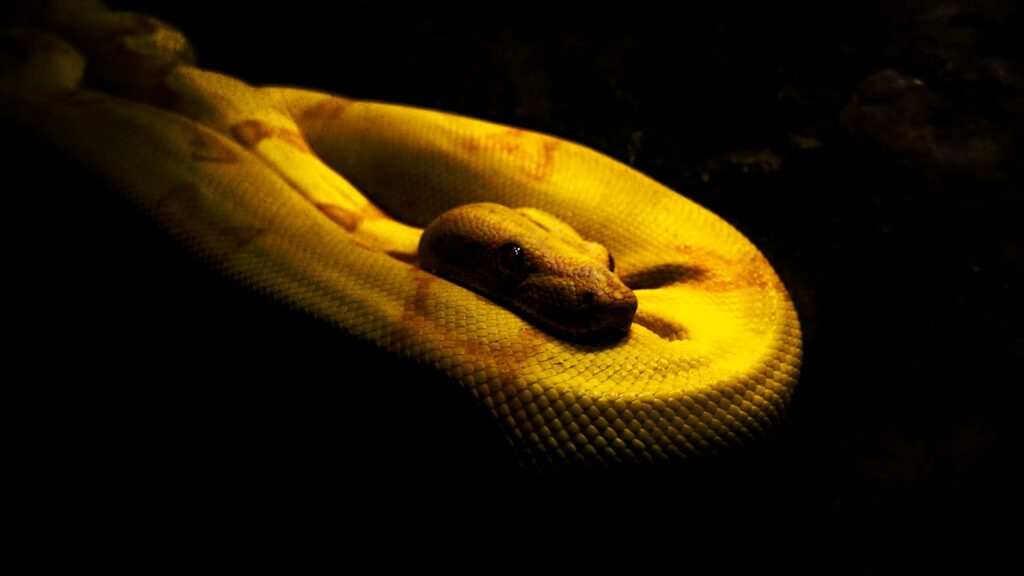
The appearance and functionality of the spectacle vary considerably among the more than 3,000 snake species worldwide. Arboreal species like the green tree python have particularly clear spectacles that allow for sharp vision, essential for targeting prey among complex branch structures. Fossorial (burrowing) species often display thicker, more durable spectacles that can withstand abrasion from soil and sand particles. Aquatic snakes like sea kraits have evolved spectacles with special adaptations that allow for clear underwater vision while providing additional protection against saltwater. Desert-dwelling species typically possess spectacles with enhanced protection against UV radiation and specialized structures to minimize moisture loss, showing how this single adaptation has diversified to suit countless ecological niches.
The Brain-Eye Connection in Reptiles
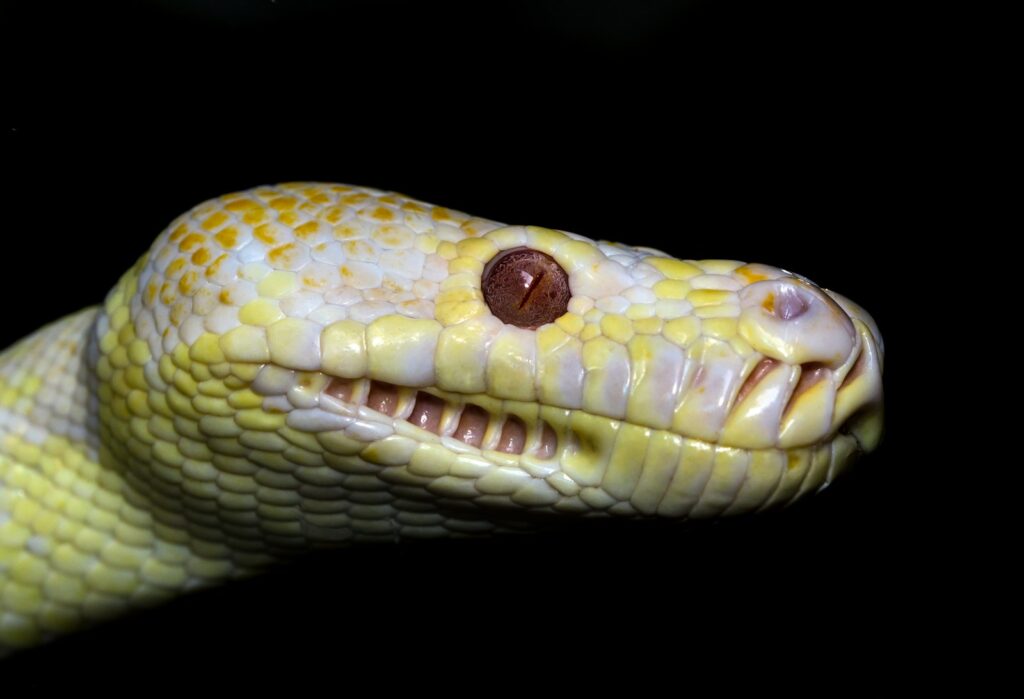
The neurological connection between a snake’s eyes and brain differs significantly from that of mammals, allowing for this unique sleep arrangement. Studies of reptile neurology reveal that snakes process visual information through specialized pathways that can modulate input sensitivity based on the animal’s state of alertness. During sleep periods, the visual cortex areas show reduced activity while maintaining minimal processing capability for significant visual stimuli. This selective visual processing is integrated with the snake’s other sensory systems, including their remarkable ability to detect heat signatures and chemical signals. The reptilian brain has evolved to prioritize survival-relevant information even during rest states, creating an efficient balance between recovery and vigilance that suits their predator-prey lifestyle.
Misconceptions About Snake Sleep
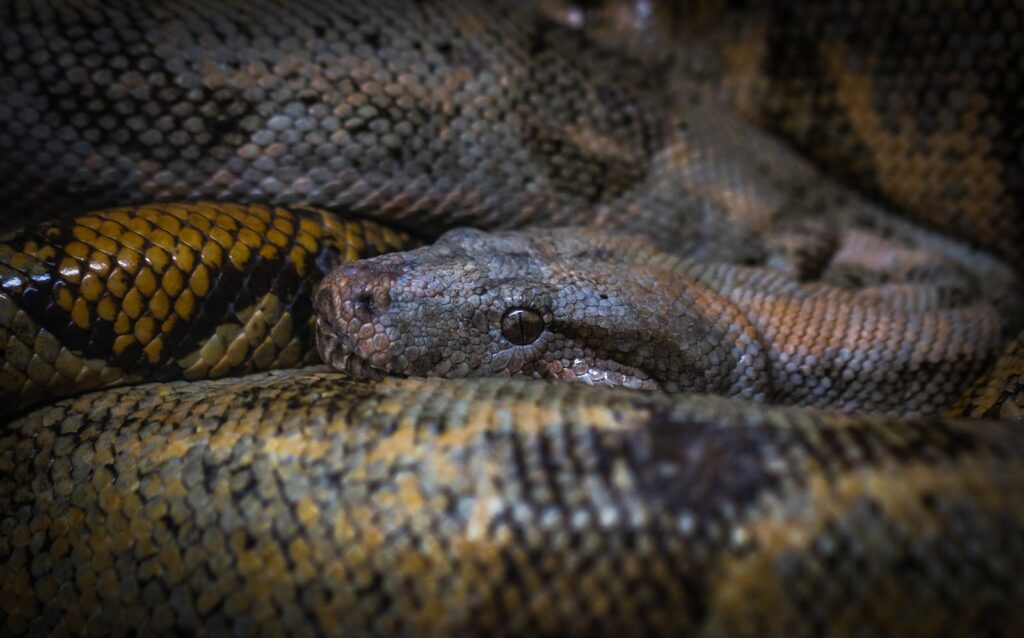
The always-open eyes of snakes have led to numerous misconceptions about their sleep habits throughout human history. Many people incorrectly believe that snakes never sleep at all, remaining constantly alert and hunting. Others assume that snakes sleep with one eye open and one eye closed, confusing them with certain bird and marine mammal species that can engage in unihemispheric sleep. Some folklore traditions even claim that snakes never rest because they represent evil or chaos in cultural mythologies. The scientific reality is more nuanced—snakes do experience genuine sleep states with reduced brain activity and metabolism, despite their perpetually open eyes, and they typically sleep for several hours each day, with timing often related to their preferred hunting periods.
Implications for Snake Health and Care
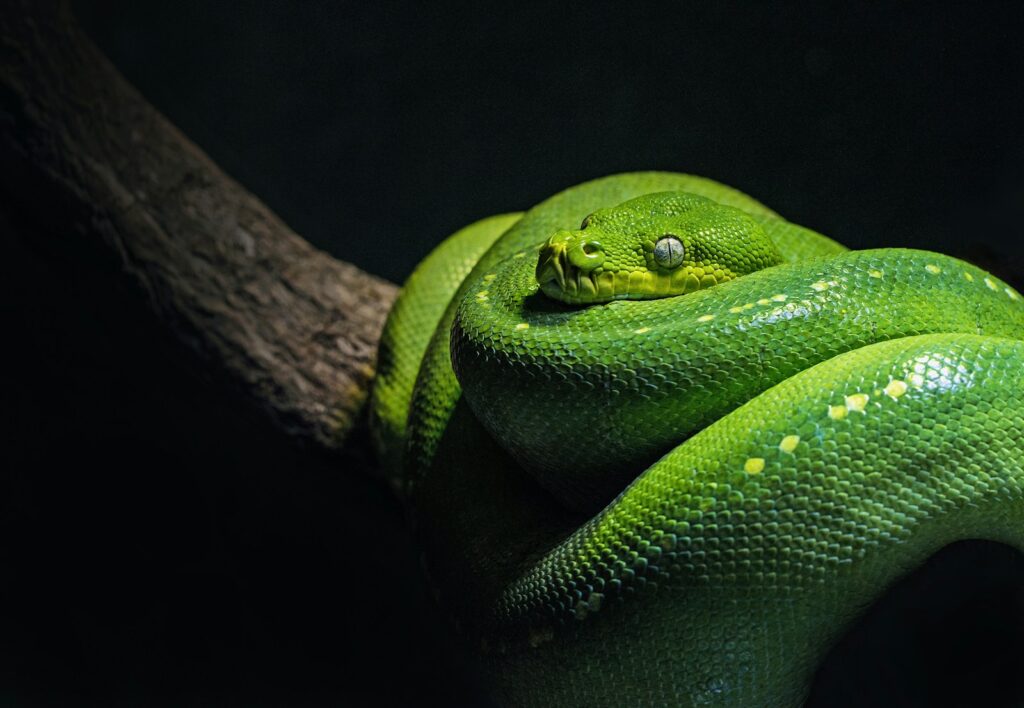
For those keeping snakes as pets, understanding the implications of lidless eyes is crucial for proper care. Unlike mammals, snakes cannot show drowsiness through drooping eyelids, making it more challenging for owners to recognize when their pet might be stressed or unwell. Healthy snake eyes should appear clear, bright, and free from discharge or cloudiness (except during shedding). Captive environments must be designed with appropriate humidity levels to support proper eye health and shedding processes. If a snake’s spectacle appears damaged or shows unusual cloudiness outside of shedding periods, veterinary attention may be required. Responsible snake owners learn to recognize other behavioral indicators of sleep, such as reduced tongue flicking and characteristic resting postures.
Sleep Behaviors and Predator Avoidance
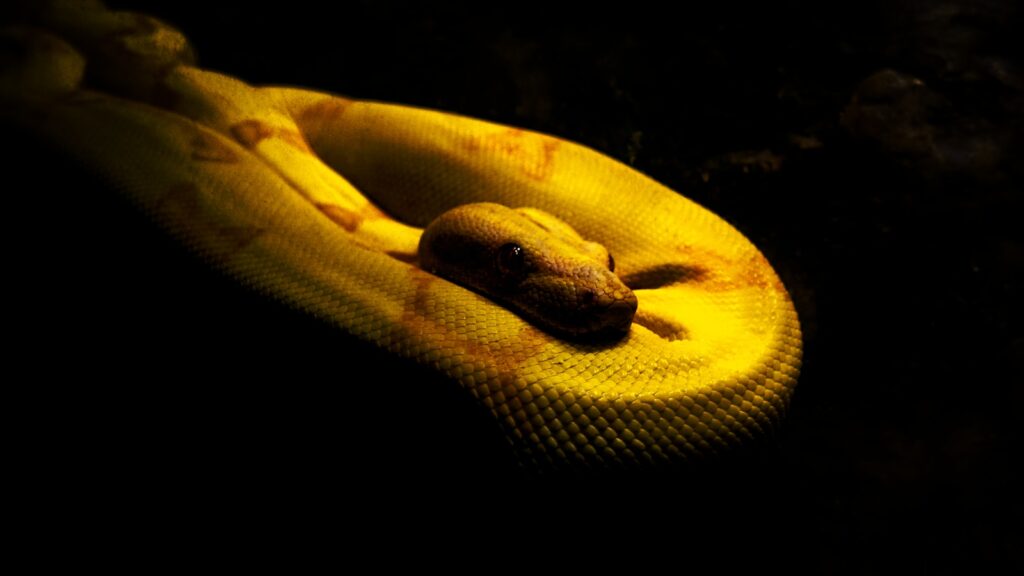
A snake’s open-eyed sleep state plays a crucial role in its predator avoidance strategy. Even while resting, many snake species position themselves to maintain visual awareness of their surroundings, often selecting shelters that allow them to rest while maintaining sightlines to potential approach paths. This vigilant rest state gives snakes a crucial survival advantage, as they can react quickly to threats without needing to transition from deep sleep to full alertness. Some species combine this visual vigilance with strategic body positioning, resting with their head near the entrance of a burrow or shelter while keeping most of their body protected. For venomous species, this alertness during rest periods enhances their defense capabilities, allowing them to deploy their venom even when disturbed during sleep.
The Spectacle During Shedding Periods
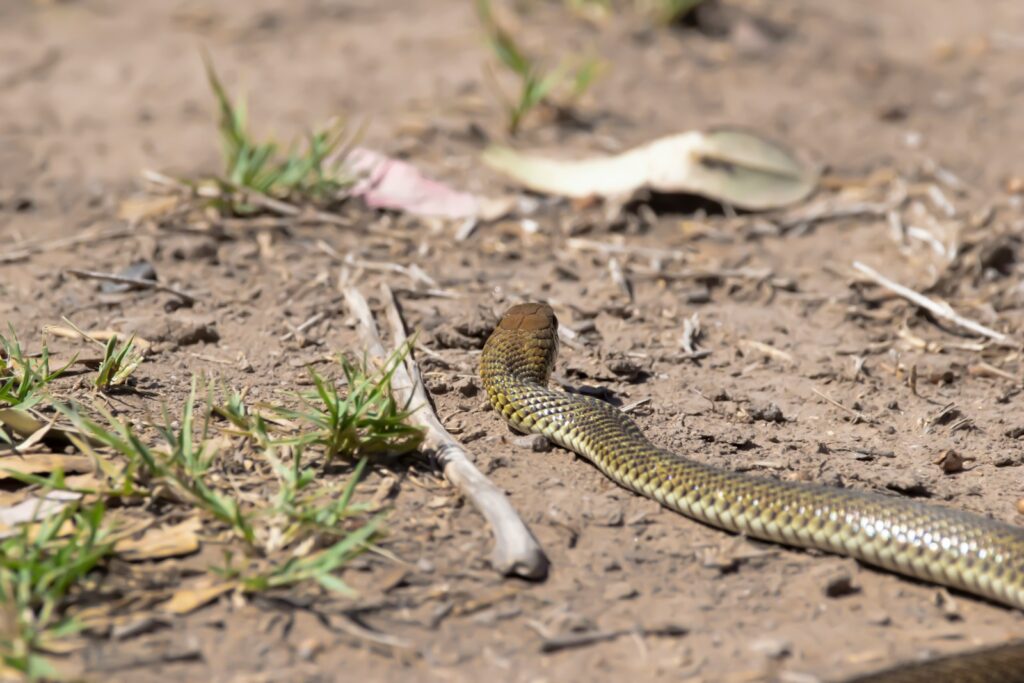
The shedding process represents a particularly vulnerable time for snakes regarding their eye function and overall awareness. During the pre-shedding phase, fluid accumulates between the old and new layers of the spectacle, creating the characteristic “blue phase” where the snake’s eyes appear cloudy or milky. This temporary condition significantly impairs the snake’s vision, making them more defensive and likely to retreat into hiding. Wild snakes typically reduce activity during this period to minimize predation risk while their visual acuity is compromised. The actual shedding of the spectacle is a critical moment—if the old eye covering fails to release properly (a condition called retained eyecaps), it can lead to serious health complications, including infection and permanent vision damage, particularly in captive specimens where humidity levels may be suboptimal.
Comparative Sleep Biology Across Reptiles

Snakes aren’t the only reptiles that sleep with their eyes open—this trait appears across most scaled reptiles, including lizards, which also possess spectacles rather than movable eyelids. Interestingly, crocodilians and turtles represent exceptions among reptiles, having evolved movable eyelids that close during sleep, suggesting different evolutionary pressures shaped their rest behaviors. Some gecko species display a fascinating intermediate adaptation with transparent “window” eyelids that allow limited vision even when their eyes appear closed. The varied sleep adaptations across reptile species offer valuable insights into how different environmental pressures drive evolutionary adaptations related to vigilance and rest. These comparative studies help scientists better understand the complex trade-offs between energy conservation through deep sleep and the maintenance of environmental awareness for predator avoidance.
The phenomenon of snakes sleeping with their eyes open reveals a fascinating intersection of evolutionary adaptation, physiology, and behavior. Far from a mere curiosity, this characteristic represents a sophisticated survival strategy that balances the seemingly contradictory needs for rest and vigilance. Through the development of the protective spectacle, snakes have eliminated the vulnerability of exposed eyes while maintaining their visual connection to the surrounding environment even during sleep. This remarkable adaptation exemplifies how evolution crafts unique solutions to universal challenges, reshaping basic biological functions to suit specific ecological niches. As we continue to study these fascinating creatures, their lidless sleep reminds us that nature often finds unexpected answers to life’s fundamental challenges.

